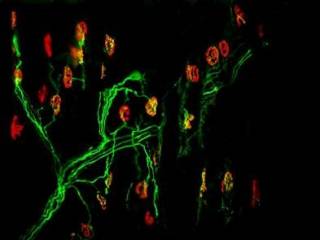Convenors: Prof Linda Greensmith and Pietro Fratta
This short course gives an introduction to anatomy and development of motoneurons and neuromuscular junctions, the development of different motoneuron types leading to differences in their physiology and functional characteristics. The course also gives an overview of the most important diseases that affect either the neuromuscular junction or motor neurons and lead to diseases affecting the motor system as a whole, including motoneuron disease (MND), Spinobulbar Muscular Atrophy (SBMA) and rare diseases of the neuromuscular junction, such as Myasthenia Gravis.
This course will next take place: TBC
Learning outcomes
By the end of this course participants will understand the anatomy, development and functional characteristics of different spinal motoneuron subtypes and their interdependence with innervated muscles for the maintenance of intact neuromuscular junctions and correct functioning of the neuromuscular system. Attendees will also be able to understand the underlying pathology, genetic background and current research trends in motoneuron diseases and diseases of neuromuscular junctions. Participants will be able to understand and interpret neurophysiological assessments and characteristic histopathology in neuromuscular junction diseases. Participants will be also able to critically evaluate the validity of disease models for the development of future therapies and to understand the difficulties designing clinical trials in NMD.
Journal club
Participants of this short course will have the opportunity to get an insight and to take part in a journal club organised by research groups at the UCL Queen Square Institute of Neurology. From this science-focused journal club, participants will learn to present and interpret research publications in the field of motor neuron diseases.
Examples of lecture topics
- Genetics of motor neuron diseases (Pietro Fratta)
- Therapeutic strategies for the treatment of MND- masterclass (Barney Bryson, Bernadett Kalmar and Linda Greensmith)
- Spinal Muscular Atrophy (Francesco Muntoni)
- Myasthenia Gravis (Dimitri Kullman)
- Acquired diseases of the neuromuscular junction (Angela Vincent)
- Setting up clinical trials in motoneurons diseases (Pedro Machado)
 Close
Close


